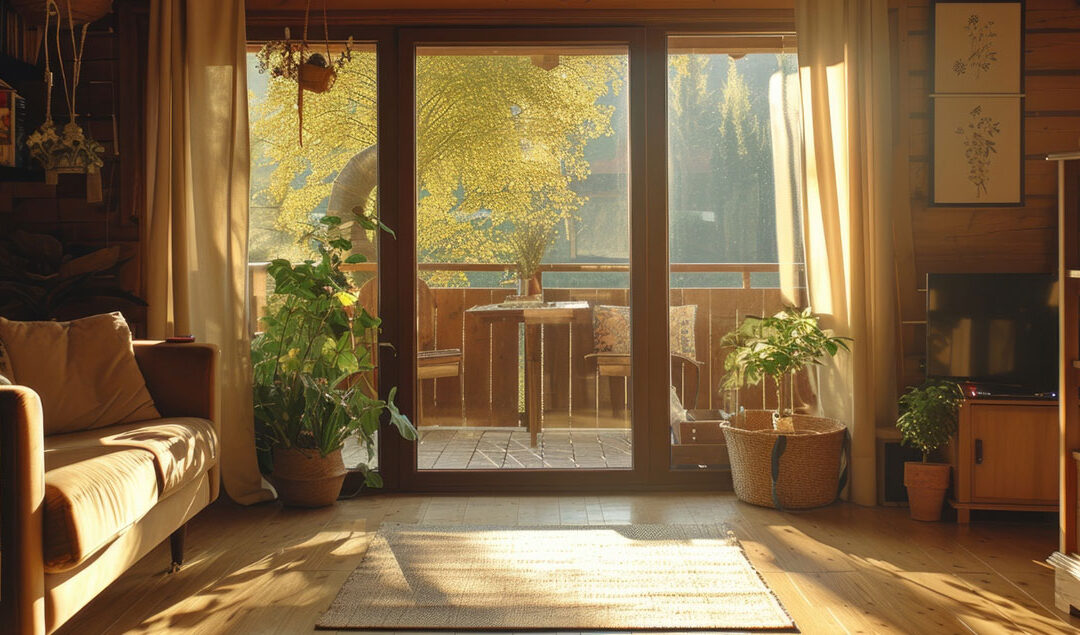Morning rays feel gentle on skin, yet they pack a sneaky punch. Ultraviolet (UV) light rides in on that glow and chews through dye molecules, wood fibers, and even the finish on piano keys. A cherry-red sofa turns salmon, family photos bleach at the edges, hardwood loses its rich grain. Most homeowners notice the damage once it is too late, when a rug pulled back reveals a ghost print of the coffee table. Low E3 window replacement Danville CA steps in like a quiet bodyguard, blocking nearly every UV wave before it reaches the living room.
The Science Behind the Fade
UV sits just beyond visible violet on the light spectrum. Three bands matter indoors:
- UVA (320-400 nm) – slips through standard glass, drives up to 60 percent of fading.
- UVB (280-320 nm) – smaller share of fading but harsher on skin.
- UVC (below 280 nm) – filtered by Earth’s ozone before it ever hits the pane.
Regular double glazing window installation stops almost all UVB yet lets most UVA cruise right through. That is the silent saboteur. In testing by national labs, fabric samples behind clear glass lost half their color in under a year of average daylight exposure. Low E3 glass drops that loss to single-digit percentages.
How Low E3 Glass Throws a Shield
Silver window replacement for homes reflects selected wavelengths—in this case UV and infrared—while allowing much of the visible rainbow to pass. Engineers stack three coats (hence the “3”) with nanometer precision. The result: UV transmittance plunges below one percent. Yet clarity stays high enough that window shoppers rarely spot a tint unless they hunt for it.
Numbers That Matter
- UV Block Rate: Up to 99 percent across UVA and UVB bands.
- Visible Light Transmission: Often 60 – 70 percent, so rooms stay bright.
- Fade Measurement: In a standard ISO Blue Wool test, dyed wool behind Low E3 glass keeps color six times longer than wool behind plain glass.
Those stats translate to real money. Upholstery specialists estimate sun-fade replacement costs average eight to ten percent of a room’s furniture value every decade. Stop the fade, stretch that timeline, and the window replacement cost upgrade starts paying for itself.
Beyond Color: Hidden Wins
Preserves Wood Strength
UV breaks lignin bonds in timber, leading to surface brittleness. Floors covered by Low E3-guarded windows resist cupping and hairline cracks far longer than planks under clear panes.
Protects Art and Heirlooms
Acrylic glazing on framed prints helps, yet stray UVA still creeps around edges. Low E3 sets a first line of defense right at the exterior wall, easing the burden on secondary coatings.
Healthier Indoor Skin
Dermatologists link long-term UVA exposure with premature aging. Sitting near a sunny window feels less risky when the glass blocks that spectrum.
Fitting the Right Unit
Low E3 comes in multiple packages. A few pointers before signing that order:
- Check the Label – Look for an ultraviolet transmittance number under 1 percent.
- Mind Orientation – South- and west-facing walls collect the fiercest sun; prioritize them.
- Pair with Argon Fill – Argon slows heat flow, giving bonus energy savings.
- Opt for Laminated Layers – If road noise or storms worry you, a laminated lite couples UV defense with sound and impact control.
Installation Details That Count
A high-tech pane still needs a tight frame. Gaps invite stray rays through reflections. Pros should seal with UV-resistant caulk and use spacers that match the window’s thermal movement. Ask the crew to leave manufacturer stickers until final cleaning; they list spec codes handy for warranty claims later.
Care and Cleaning
Skip abrasive pads that might scuff the inner coat. A soft cloth, mild soap, and distilled water keep deposits at bay. Never scrape paint with metal blades on the inner surface; try a plastic scraper instead. The coating sits safely inside the IGU, yet scratches on the exterior lite can scatter light and reduce clarity.
A Quick Cost Snapshot
Pricing varies by region, though on average Low E3 runs ten to twenty percent more than clear double glazing. Factor in:
- Avoided repainting of sun-patched walls
- Longer life for leather and textiles
- Lower HVAC load from reduced solar heat
Home audit software shows simple payback in five to eight years for most climates—faster in high-sun zones such as Arizona, a bit slower in northern states with milder summers.
Common Questions
Will rooms look darker?
Not much. The human eye adapts fast, and the pane still passes most visible light.
Can indoor plants survive?
Yes. Photosynthesis relies on blue and red bands, which sail through. Place shade-loving species a step farther from the glass to avoid residual heat.
Does the coating peel?
No. The silver layer lives inside the sealed unit, safe from scratches and moisture.
Final Thoughts: Saving More Than Money
Family heirlooms carry stories no price tag covers. Granddad’s maple rocker, the quilt stitched at camp, the wedding photograph printed on silver halide paper—all sit in the path of sunlight every day. Low E3 window fitters near me stands guard, soaking up that punishment so memories stay bright. Energy savings sweeten the deal, yet peace of mind shines brighter.
Next time the afternoon blaze stretches across the living room, watch it dance on the floorboards while your sofa keeps its color. That small victory begins with a affordable window replacement you hardly notice—until you tally the years and see everything inside still looks as vibrant as the day it moved in.

